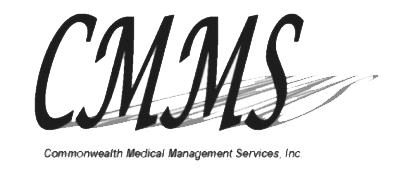Are there alternatives to the rush towards large, hospital-dominated systems? Yes!
Read the following article published by Medscape this month that elaborates on this topic.
Published by: Medscape: Marcia Frellick: January 14, 2016
More than half of family physicians seeking board certification work in small and solo practices, and their role remains vital in the transformation to value-based care, according to the authors of an analysis published online January 11 in the Annals of Family Medicine.
The article is part of a series examining alternatives to the rush toward large, hospital-dominated systems.
“Our findings have implications for the future of family medicine,” Winston R. Liaw, MD, MPH, from the Virginia Commonwealth University in Richmond, and colleagues write.
webmd.ads2.defineAd({id:’ads-pos-520′,pos: 520}); “First, smaller practices may be missing out on new payment models that are dependent on patient-centered medical home [PCMH] certification. We found the likelihood of having a care coordinator and [PCMH] certification increased with practice size. Second, we lack evidence regarding whether changes in practice size are associated with reduced costs or improved patient satisfaction,” they explain.
Dr Liaw and colleagues analyzed demographic survey data from 10,888 family physicians seeking certification through the American Board of Family Medicine in 2013 and found that 35.9% of respondents worked in small practices (2 to 5 providers), and 15.4% worked in solo practices.
One fifth of the small practices were in rural settings. In addition, small and solo practices were more commonly the choice for Black and Hispanic physicians, and for those who have been practicing for more than 30 years.
Solo practices had the highest percentage of physicians who could communicate care in Spanish (24.1%) and other non-English languages (13.0%). And although physicians in medium and large practices were more likely to attend deliveries, perform prenatal care, and work in multispecialty groups, physicians in small and medium practices had the broadest scopes of practice, the researchers found.
Does Joining a PCMH Make Sense?
Being part of a PCMH may not make sense for some smaller practices, say writers of an editorial accompanying the study, especially if the practice is already performing at a high level.
webmd.ads2.defineAd({id:’ads-pos-420′,pos: 420}); Kelley K. Glancey, MD, and James G. Kennedy, MD, MBA, from Byers Peak Family Medicine in Winter Park, Colorado, said that was the case for their small, rural practice in the Colorado mountains: Their low overhead means they can offer longer appointments, time for chronic disease management, and same-day, open-access scheduling. But quality measures can work against them.
They use the example of their Medicare hospital admissions per 1000 members. They had 140 vs 196 for the region. Their emergency department visits per 1000 members were 269 vs 463 for the region. So their 2013 to 2014 data showed no improvement, which was “not surprising since we were already ‘performing at a high level of cost savings.’ ”
They say the case has not been made that joining PCMHs gets small practices closer to the triple aim of improving the patient experience, optimizing care for populations, and reducing costs. The editorialists call for small practices to consider a return to a transparent model such as direct primary care, in which there is a direct financial relationship between patients and healthcare providers in which the consumer judges quality and cost directly.
Help in Transitioning
Dr Liaw and colleagues call for policies to help small practices transition toward value-based care and benefit from economies of scale without sacrificing the advantages of being small. For example, in accountable care organizations, small practices can share resources while generating potential shared savings.
They conclude that extension programs and community health teams have the potential to facilitate transformation within solo and small practices.
The Primary Care Extension Program is an example, they write. These programs model the successful agricultural extension model, which used change agents to disseminate best practices and innovations to increase crop yields. Such extension programs have already been successful in spreading adoption of electronic health records worldwide, they note.
In another accompanying editorial, Farzad Mostashari, MD, chief executive officer of Aledade, Inc, Bethesda, Maryland, suggests other measures to help small family practices thrive under value-based care.
He says primary care rates should be comparable with those paid to organized systems, reducing the incentives for independent primary care practices to join hospital systems, and he calls for the federal government and payers to lessen regulatory burdens for these practices.
“Limiting the number of process measures reported and following the lead of [the Centers for Medicare & Medicaid Services] in permitting quality intermediaries to conduct the reporting of quality measures could alleviate burdens,” he writes.
Family physicians are uniquely positioned under the evolving health system because they are engaged in the lives of their patients and have gained the trust necessary to change behavior, Dr Mostashari says.
“Now that the financial systems exist for this type of medicine to be rewarded, we need to facilitate the partnerships, technologies, and policies necessary for independent practices to thrive,” he writes.
The Robert Graham Center received support for this study from the American Board of Family Physicians in the form of a contract for ongoing collaborative research. Dr Mostashari is chief executive officer of Aledade, Inc, a for-profit, start-up company that partners with independent, primary care physicians to create and run accountable care organizations and enter into value-based contract arrangements with payers. The other authors and editorialists have disclosed no relevant financial relationships.
Ann Fam Med. 2016;14:4-15. Article full text, Glancey editorial full text, Mostashari editorial full text
